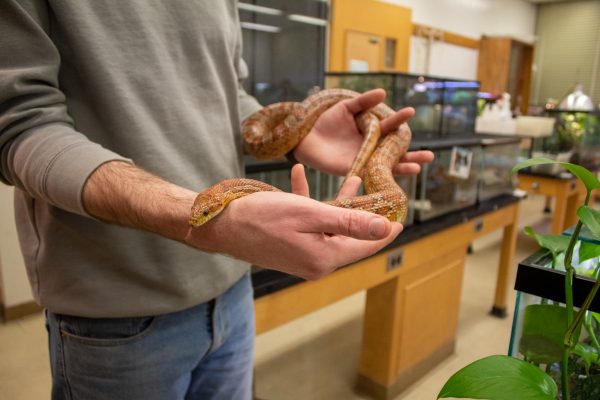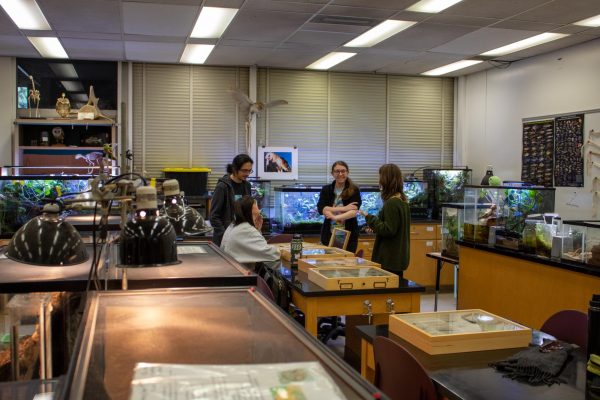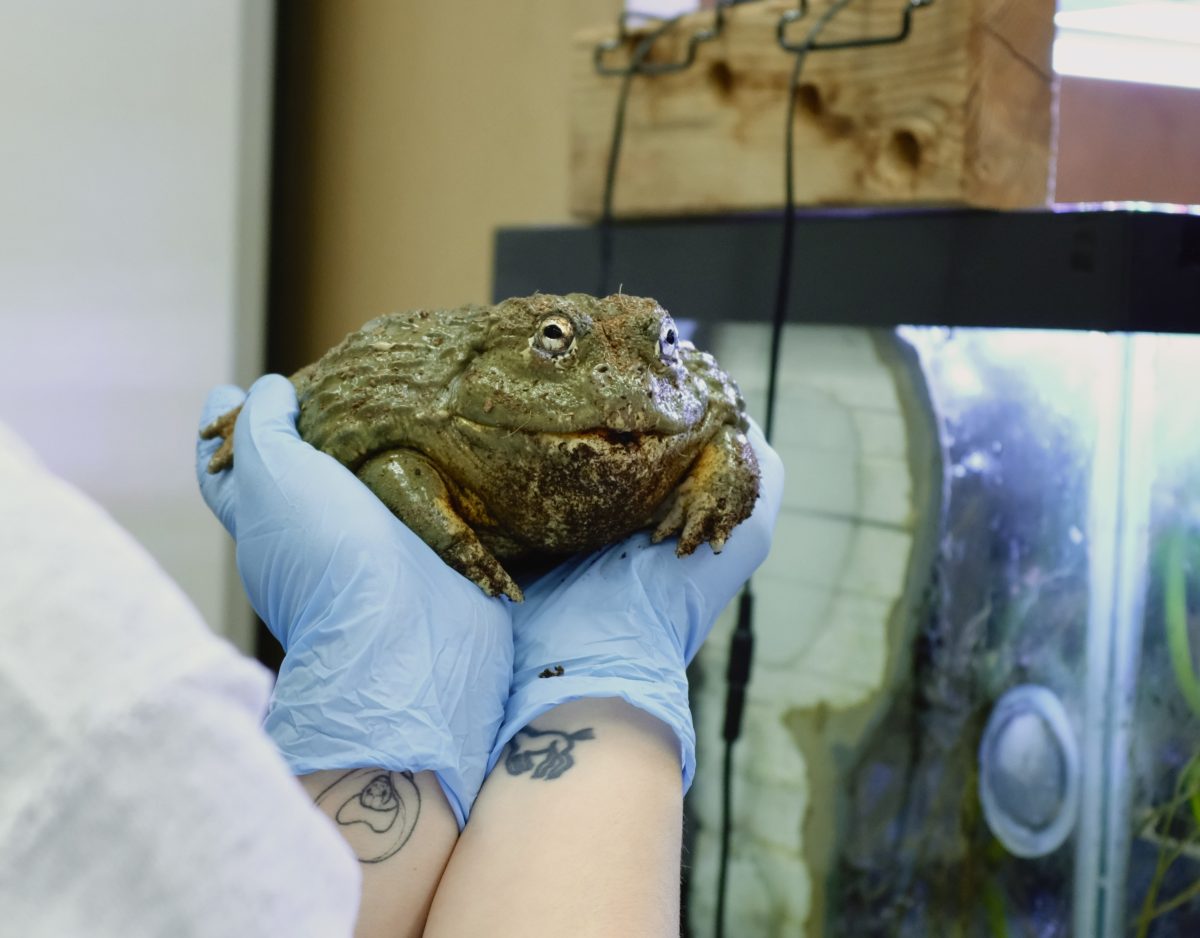From the deserts of Australia to the Amazon rainforest, the Vivarium at Sacramento State has creatures that walk, crawl and slither for students to discover in Sequoia Hall, Room 110.
The Vivarium has over 25 species of reptiles, amphibians and invertebrates on display, including a blue-tongued skink, dart frogs and tarantulas with a passionate team of student volunteers ready to welcome guests to explore the space.
A diverse array of exotic invertebrates, such as stick bugs and Madagascar hissing cockroaches welcome students into the front of the room, along with a ball python named Ivy, a corn snake named Caramel and a green tree python named Speckles.
Sam Curtis, the instructional support technician for the Vivarium, believes in providing an accessible environment for students to have hands-on experience with the animals.
“The room is here to provide this experience for students who come in,” Curtis said. “A lot of the animals are handleable.”
Some other animals within the space include a panther chameleon, leopard and crested geckos, and a fan favorite: Mr. Pickles the African bullfrog.
Student assistant to the Vivarium and senior microbiology major Audrey Dakis said she is passionate about showing off the fun sides of the animals in the Vivarium. She particularly likes introducing students to Mr. Pickles.
“He’s unbelievable,” Dakis said of Mr. Pickles. “Every person I show him to, I say, ‘Are you ready?’ and they always say, ‘Yes.’ But they aren’t. And then when I reveal him, it’s just a gasp.”
Many of the animals are available to hold and eager to explore. The ball python, Ivy, even is occasionally spotted taking a walk outside Sequoia Hall with a volunteer.

Curtis said that many students avoid the tarantulas, snakes and Madagascar hissing cockroaches due to their fears, but he said he believes exposure is the best remedy.
RELATED: Stinger Style: Local sustainable businesses strive for an eco-friendly community
“You have to see them for more than just something you’re afraid of, but instead for how interesting they are,” Curtis said. “You have to get past that initial urge to step away and just observe them.”
If you’re a fan of creepy crawlies, however, there is a fascinating display of pinned beetles, butterflies and weevils which showcase the Vivarium’s smallest creatures.
The Vivarium originally started from random animal accumulation for the purpose of tours and class field trips roughly 25 years ago. The animal’s origins are varied; some were former pets from students or associates, while a small number were purchased specifically for the space.
“When I was in undergrad here, the collection existed largely the way it is now,” Curtis said. “But I had no idea because it wasn’t publicized or open, and I wanted it to be accessible to students.”

The Vivarium reports increased numbers of student attendance since its modern opening in 2020, with nearly 500 visitors this semester alone, with high visitorship ensuring the space stays open, supplied and accessible to students.
Second-year biology major and a student assistant for the Vivarium Vivian Conner has been devotedly working and volunteering for the Vivarium since her senior year of high school, noting her appreciation for having a place to be around a variety of animals.
“It’s a place where people can see that these animals are actually amazing,” Conner said. “It helps raise awareness about the animals around them.”
Students who have an interest in caring for reptiles and insects are encouraged to talk to Curtis about volunteer opportunities.
If you want to foster your appreciation for the natural world and support a cool feature on campus, the Vivarium is open weekdays from 9 a.m. to 3 p.m.


































































































































